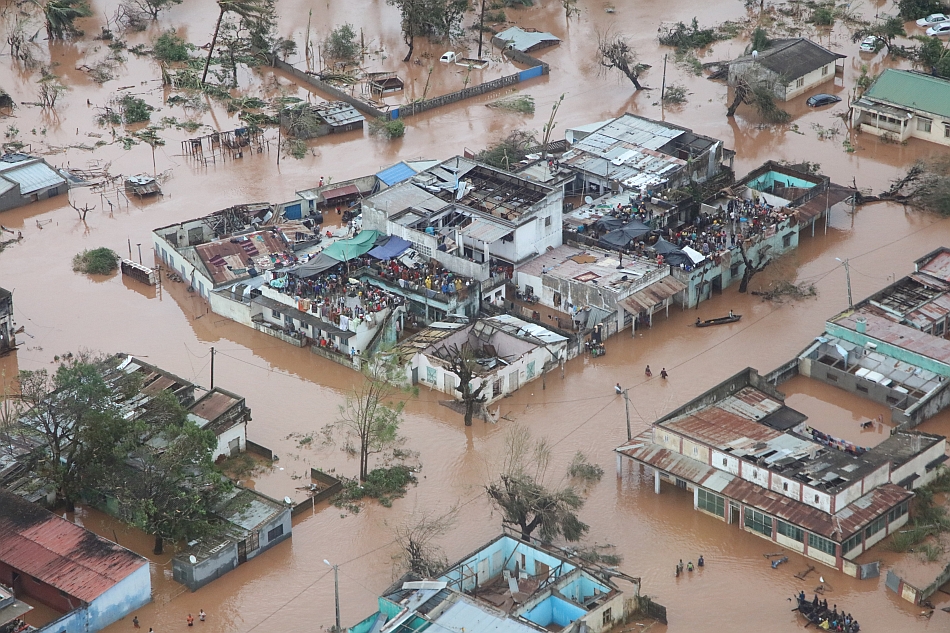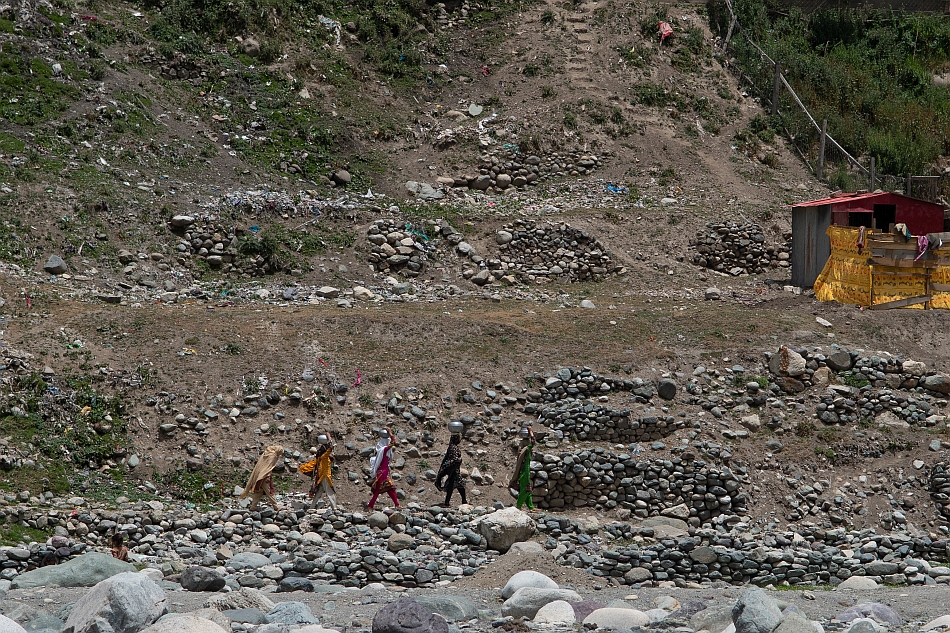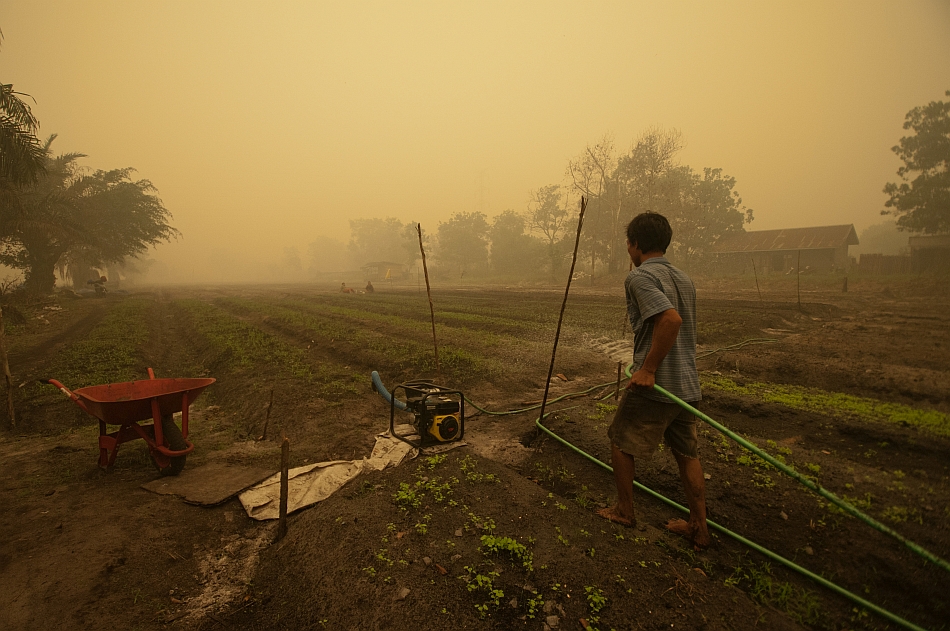A year after COP27, we explain what loss and damage is, how it relates to water, what a Loss and Damage Fund would do, and what progress has been made.
By Luisa Chantler Edmond, Princeton in Asia fellow.

The past year has seen vulnerable communities across the globe experience numerous water-related disasters that have either threatened or completely decimated lives and livelihoods. Countries in the Global South are exposed to this type of disaster, with their vulnerability often directly related to both the short- and long-term effects of the climate crisis.
Calls for climate reparations have gained momentum over the last few years and more concretely on the agenda of last year’s climate negotiations. In 2022, COP27 delegates reached a historic agreement on loss and damage funding, generally seen as a significant step in the right direction to assist climate-vulnerable nations.
A year on, the operationalization of the Loss and Damage Fund will be one of the main focal points of discussions at this year’s COP28 in Dubai.
What is loss and damage?
Despite loss and damage being a pressing issue at the top of the international climate crisis agenda, the UNFCCC does not recognize a set definition of the term. The phrase usually describes policies and actions that address the already unavoidable, and detrimental, effects of human-induced climate change.
The climate crisis has already impacted a myriad of communities across the globe, many of which are experiencing irrevocable loss and damage to life, livelihoods and ecosystems. Developing nations, who contribute the least to global greenhouse gas emissions, experience loss and damage most keenly.
The nature of climate change as a compounding crisis means that its effects are experienced in both the short and long term: vulnerable communities must contend with natural disasters in tandem with the ongoing pressures of slow-onset events. Catastrophes with an immediate and significant impact, such as floods or landslides, are an example of the short-term effects of the climate crisis. However, slow-onset events, such as gradual groundwater depletion or the intrusion of saltwater in freshwater resources, are also climate change-induced events with the capacity to wreak havoc on community resilience.
These events cause loss and damage in many ways and chiefly threaten to make already vulnerable communities increasingly susceptible to further climate-related disasters.

Why are some countries disproportionately impacted by loss and damage?
Rising global temperatures have triggered changes to our climate, with unpredictable and often damaging results. Climate change is an intersectional and compounding crisis that intensifies disaster likelihood across many challenges and issues. These sectors include socioeconomic development, food, land and water systems, and migration.
As environmental degradation continues to escalate, it is developing nations that do not have the means to cope with the compound challenge of climate change and are made increasingly vulnerable to loss and damage. This risk is multiplied for countries whose gross domestic product (GDP) relies heavily on the agricultural sector for food security and economic prosperity. In South Asia for example, 15% of the GDP is expected to be at risk by 2050. In contrast, countries with large GDPs, many of whom are responsible for the majority of historical global greenhouse gas emissions, have the financial ability to support adaptation planning and build disaster-risk resilience.
Why is water particularly important when thinking about loss and damage?
Water can be an extremely destructive force. Floods, landslides, droughts and water-borne diseases are just a few examples of water-related events induced by climate change that can have major negative impacts on whole countries and regions.
Water is also one of our most precious commodities. Without sufficient water in the agricultural sector crops fail and millions of people are at risk of losing their livelihoods and eventually starving. We are reliant on water to generate energy and access to safe drinking water protects and nurtures the health of entire communities. Shared water sources are often central to cross-border negotiations and international relations.
Each of these examples can cause loss and damage within the communities where their effects are concentrated. Hence, building resilience is central to climate mitigation. However, many of the impacted nations lack the capital to address these challenges and implement solutions.
What are some water-related examples of loss and damage?
The power of water to trigger disasters across entire regions is immense. In September of 2023, Storm Daniel deluged the North African country of Libya, causing dams and bridges to collapse. The resultant tidal wave claimed thousands of lives and destroyed entire neighborhoods. As of the September 28, 2023, over 40,000 people remain displaced, unable to return to homes that are either severely damaged or destroyed. While infrastructure failings undoubtedly played a significant role in the cause of the flooding, it is being reported that climate change made the event 50 times more likely and 50% more intense. The considerable risk associated with these floods is particularly concerning in the context of Libya’s contribution to global greenhouse gas emissions: in 2021 the country was responsible for 0.20% of the carbon dioxide emitted into the atmosphere.
While the influx of water can mean disaster, its absence is equally powerful. As of October 2023, severe drought and rapidly rising water temperatures in the Brazilian Amazon have caused oxygen levels in the river and Lake Tefe to plummet. The knock-on effect of which is suggested to have been the death of 120 endangered Amazon River dolphins, a number which makes up a sizable proportion of their remaining population. Lake Tefe’s water temperature is currently 10 degrees higher than usual October levels. The mass death of an endangered species is an important indicator that this Amazonian drought will have lasting consequences for all species relying on the river, including humans. In fact, water shortages in the region have pushed people to petition officials for aid as the food and fuel that normally reaches them via the dwindling river are unable to complete the journey.

What is being done to combat loss and damage?
The creation of a funding facility for loss and damage has been on the international agenda for years. Formal discussions concerning its implementation began in 2021, at COP26 in Glasgow. A group of countries referred to at the G77+China began pushing for developed nations to agree to a climate reparations fund that would support vulnerable and developing nations with the costs of dealing with the impacts of climate change. There was no formal agreement emerging from COP26, and the G77+ China waited until COP27 for a collected group of 200 nations to agree to the formation of a Loss and Damage Fund.
This announcement was the highlight of last year’s COP27 and made headlines across the globe, but also raised the question of who exactly would foot the bill. A Transitional Committee was tasked with establishing a set of recommendations for the Loss and Damage Fund: how the funding would be sourced, how it would be governed, and who should be eligible.
What would a Loss and Damage Fund do, and would it make a difference?
A recent study found that $143 billion per year of the costs of extreme events is attributable to climate change, and that the majority of it (63%) is due to loss of life.
A Loss and Damage Fund would enable developing and vulnerable nations to draw upon adequate monetary resources to protect themselves from the adverse effects of the climate crisis — the only way to make adaptation measures effective.
Among other ideas, it is hoped that the money be used to rehabilitate communities and ecosystems already suffering catastrophic loss and damage, install early warning and resilience schemes, and support displaced people.
“The adaptation finance gap in developing countries is likely five to ten times greater than current international adaptation finance flows and will only widen if we do not ramp up investments,” writes Inger Andersen, Executive Director of the United Nations Environment Programme (UNEP), in the foreword to the UN’s Adaptation Gap Report 2022.
The Loss and Damage Fund represents an opportunity to close this financial gap. If implemented and governed properly, it may be possible to minimize the impact of the climate crisis on human life, nature, and the global economy.

What is next for the Loss and Damage Fund?
The conversation surrounding the Loss and Damage Fund will continue at COP28, where delegates will decide on the operationalization of the final recommendations of the Transitional Committee.
For grassroots activists and governments alike, the conference represents an opportunity to ensure climate finance is utilized effectively to prevent further damage to the world’s most vulnerable communities.
IWMI works across six regions to improve climate change adaptation and mitigation as it relates to water. Our researchers are particularly interested in advancing developments in policy and technology that establish local, regional and national resilience to loss and damage. IWMI will actively participate in COP28: supporting governments, aiding negotiators and engaging with current and prospective partners, media outlets and key stakeholders in the water and climate arenas.


